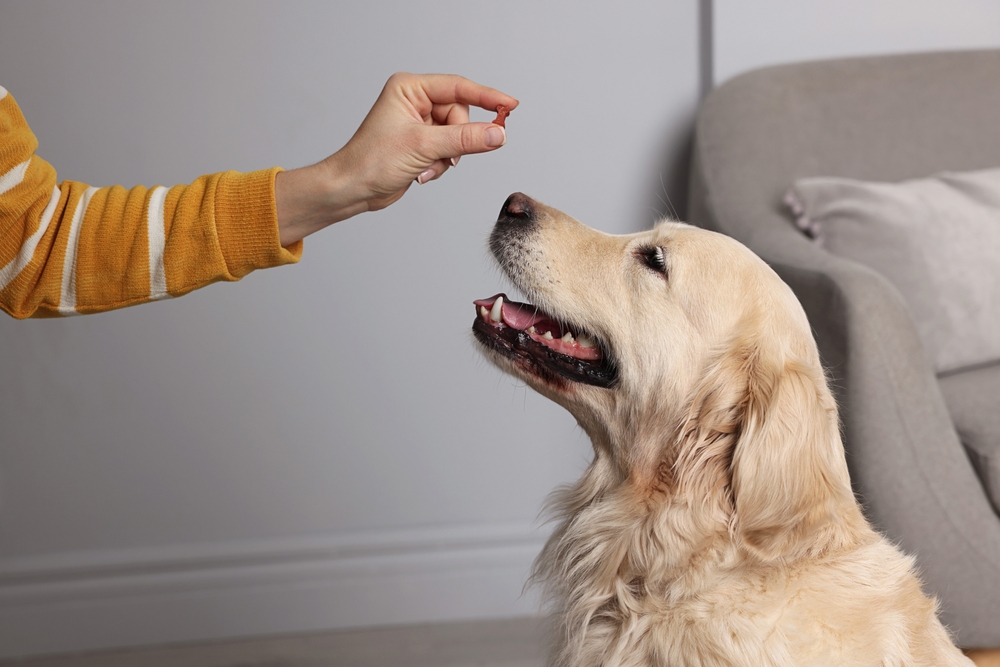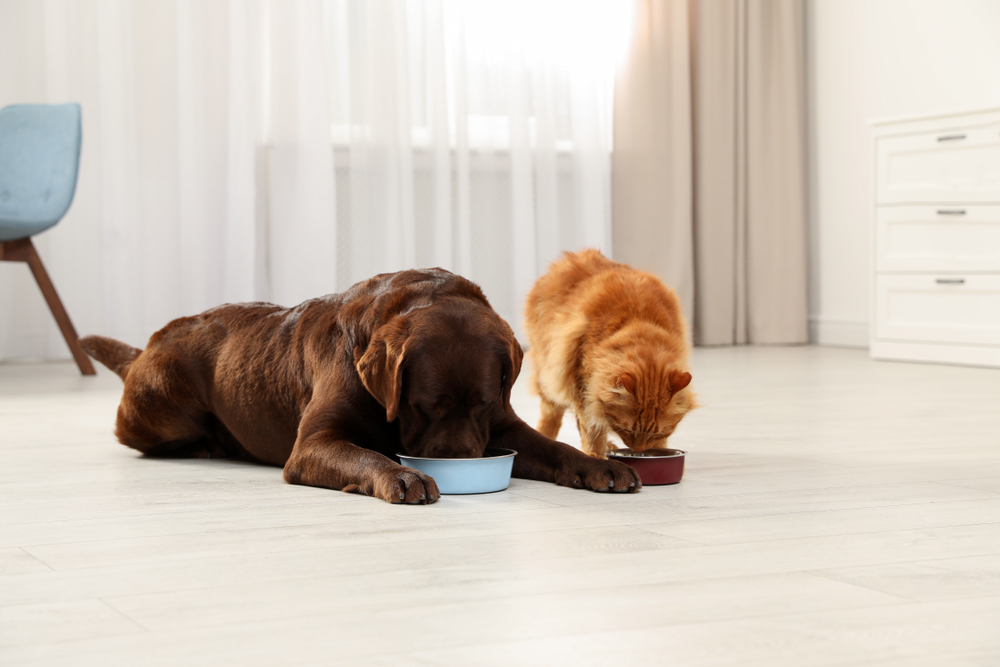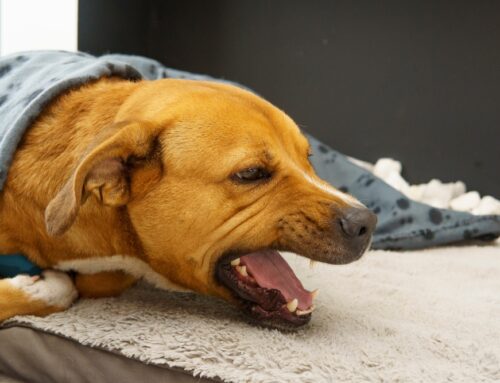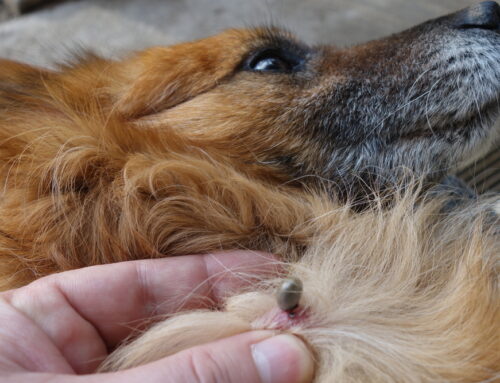Your pet’s appetite and thirst are powerful health indicators, which is why we routinely ask about them at your pet’s wellness visits. Increased or decreased food and water intake can signal potentially serious health issues ranging from hormone imbalance to parasitic disease. Familiarizing yourself with your pet’s normal habits helps you to recognize changes and know when to seek prompt care at Oliver Animal Hospital.
Here are 10 common reasons for altered eating or drinking habits in pets.
#1: Seasonal fluctuations in your pet’s appetite and thirst
Like humans, your pet’s thirst and appetite are influenced by their environment. Pets—including those who live mostly indoors—may drink more water to stay hydrated during our hot and humid south Austin summers and eat less to avoid burning energy for digestion. Alternately, during a cold spell, pets may consume more calories to stay warm and they no longer need to expend energy (i.e., evaporative cooling by panting) to stay cool.
#2: Endocrine or metabolic disorders and pets
Hormones are chemical messengers in your pet’s body that trigger specific processes and influence behavior. Changes in hormone production (i.e., excess or insufficient quantities) can strongly shape your pet’s eating and drinking habits. Such conditions include:
- Thyroid disease
- Diabetes mellitus
- Cushing’s disease (i.e., hyperadrenocorticism)
- Addison’s disease (i.e., hypoadrenocorticism)
Pets with endocrine disorders also show signs that may include increased urination, skin and coat changes, and lethargy.
#3: Urinary tract conditions and pets
Your pet’s urinary tract includes their kidneys, ureters, urinary bladder, and urethra. Conditions that affect any of these points can result in increased thirst and urination. Conditions include:
- Bacterial infection (i.e., urinary tract infection)
- Bladder inflammation
- Kidney or bladder stones
- Renal insufficiency (i.e., acute or chronic kidney failure)
#4: Liver disease in pets
One of the liver’s primary responsibilities is filtering waste products from your pet’s blood. Various causes (e.g., medication, toxins, injury, age) can negatively impact liver function and result in accumulated waste. The pet’s body responds by increasing water intake and urination in an attempt to eliminate the harmful buildup.
In addition to increased thirst, pets with liver disease may experience nausea, which causes concurrent appetite loss.
#5: Digestive disorders and pets
Digestive upset (e.g., nausea, irritation, gas) are common causes for inappetence in pets. These conditions may be triggered by a host of causes from benign to serious, including:
- Food sensitivity
- Gastritis
- Pancreatitis
- Intestinal blockage (i.e., foreign body)
- Chronic illness such as inflammatory bowel disease (IBD)
Alternatively, pets with malabsorption problems, such as exocrine pancreatic insufficiency (EPI), may lose weight despite a voracious appetite. Digestive disorders are typically accompanied by other signs such as vomiting, diarrhea, or abnormal stool.
#6 Cancer in pets
Some cancers can make pets feel unwell and nauseated, resulting in a decreased appetite, finicky eating, or complete food refusal. Other cancers feed on your pet’s nutrition and steal calories, leaving your pet persistently hungry. Cancer-fighting medications, including chemotherapy treatments, may worsen existing nausea or create additional digestive upset.
#7: Parasitic diseases in pets
Ticks and mosquitoes that harbor infections transmit disease to your pet in a single bite. These bacterial and parasitic diseases, including tick-borne Lyme disease, anaplasmosis, ehrlichiosis, and mosquito-borne heartworm disease, can trigger a laundry list of clinical signs that include appetite loss. Increased thirst can occur if kidney damage develops in response to tick-borne illness.
These conditions are easily avoided with year-round flea, tick, and heartworm prevention.
#8: Oral pain and pets
Periodontal disease (i.e., dental disease) and other oral conditions, such as soft tissue or bone cancer, can cause chronic pain when pets eat, chew, or drink. Affected pets may chew on one side of the mouth, drop food, or drip water while eating or drinking. Owners may also notice bad breath or blood on or in the pet’s water and food bowls. Disease may be visible or hidden in the back of the mouth or below the gumline.
#9: Stress and anxiety in pets
Stress and anxiety strongly influence your pet’s appetite. Nervous or excited pets may be too anxious to eat, while other pets may overeat in response to boredom, isolation, or depression. Stressed pets may exhibit other behavior changes, such as destructiveness, house soiling, or unusually clingy or aloof behavior. Stress causes in pets can be difficult to identify, but may include changes in routine or the household dynamic (e.g., new or absent pets or human family members).
#10: Prescription medication and pets

Appetite and thirst changes are known side effects of many medications, including corticosteroids (i.e., prednisone, prednisolone) and chemotherapeutic cancer drugs. Your Oliver Animal Hospital veterinarian will inform you about any anticipated changes in your pet’s eating or drinking habits. However, unexpected side effects are common, so notify your veterinarian if your pet’s appetite or thirst changes after starting or changing medications.
Eating and drinking can seem like ordinary behaviors until they become more or less frequent.
Familiarize yourself with your pet’s normal routine and diet while they are healthy, so you’ll be better prepared to recognize changes and seek timely veterinary care at Oliver Animal Hospital, your preferred south Austin vet.







Leave A Comment